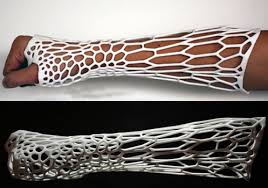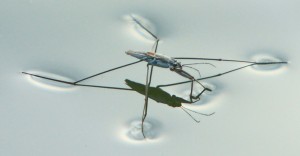Communication is a vital part of survival for animals. Like humans, it’s the ability to send, receive, and respond to different signals. Animals communicate in many different ways with each other. This includes communicating by visual, auditory, tactile, and chemical. The idea of animals communicating is not to basically talk to each other but they attract mates, warn off predators, mark their territory, and identify themselves.
Visual communication is divided into two groups, badges and displays. Badges are the color and  shape of the animal and displays are the things the animals do to communicate. For example, according to a nature works article, when a sage grouse, a type of bird, opens its tail feathers and walks around, it is trying top attract a female. Auditory communication is most common when you think animals are trying to talk. Many animals will create loud noises to alert others that a predator is coming. Tactile communication establishes dominance and comfort between different bonds. A good example of this is whenever your dog offers his paw or if your cat rubs against you, they are trying to communicate with you. A female tiger will lick and nuzzle its babies to establish comfort, allowing the babies to feel safe with its mother. Finally, chemical communication is when animals are trying to mark their territory or attract a mate. A skunk will leave its scent to let others know that it is his territory.
shape of the animal and displays are the things the animals do to communicate. For example, according to a nature works article, when a sage grouse, a type of bird, opens its tail feathers and walks around, it is trying top attract a female. Auditory communication is most common when you think animals are trying to talk. Many animals will create loud noises to alert others that a predator is coming. Tactile communication establishes dominance and comfort between different bonds. A good example of this is whenever your dog offers his paw or if your cat rubs against you, they are trying to communicate with you. A female tiger will lick and nuzzle its babies to establish comfort, allowing the babies to feel safe with its mother. Finally, chemical communication is when animals are trying to mark their territory or attract a mate. A skunk will leave its scent to let others know that it is his territory.
It’s interesting to see the different types of communication animals have with each other, but what is more intriguing is a human’s communication with an animal. The best example of this is a pet dog and its owner and the relationship that they form. For humans to understand their  dogs, it’s easy to see what the dog’s body language is. We can understand their expressions, body posture, and different movements allowing us to give the dog what he or she wants. On the other end dogs surprisingly understand humans more than we thought. According to a study, performed by researchers at Eötvös Loránd University in Budapest, Hungary, 13 dogs and with their owners were tested on their brains ability to recognize human language. The 13 dogs were tested through a fMRI, measuring brain activity, where they would be tested on two different phrases, common phrases their owner would speak to the dogs and another phrase having no meaning. Looking at the fMRI results, the left hemisphere of the dog’s brain lit up when listening to common phrases. This area of the brain for humans is connected to the process of language so the study’s results show that dogs have a great idea of distinguishing the meaning of different words. It’s hard to say, based on this single study, that dogs understand the meaning of all familiar words. Overall animals communicate in many ways for many different reasons. We now know that dogs understand us more that we previously thought and in the future, we hope to find out more information between the communication of us and our pets.
dogs, it’s easy to see what the dog’s body language is. We can understand their expressions, body posture, and different movements allowing us to give the dog what he or she wants. On the other end dogs surprisingly understand humans more than we thought. According to a study, performed by researchers at Eötvös Loránd University in Budapest, Hungary, 13 dogs and with their owners were tested on their brains ability to recognize human language. The 13 dogs were tested through a fMRI, measuring brain activity, where they would be tested on two different phrases, common phrases their owner would speak to the dogs and another phrase having no meaning. Looking at the fMRI results, the left hemisphere of the dog’s brain lit up when listening to common phrases. This area of the brain for humans is connected to the process of language so the study’s results show that dogs have a great idea of distinguishing the meaning of different words. It’s hard to say, based on this single study, that dogs understand the meaning of all familiar words. Overall animals communicate in many ways for many different reasons. We now know that dogs understand us more that we previously thought and in the future, we hope to find out more information between the communication of us and our pets.
























